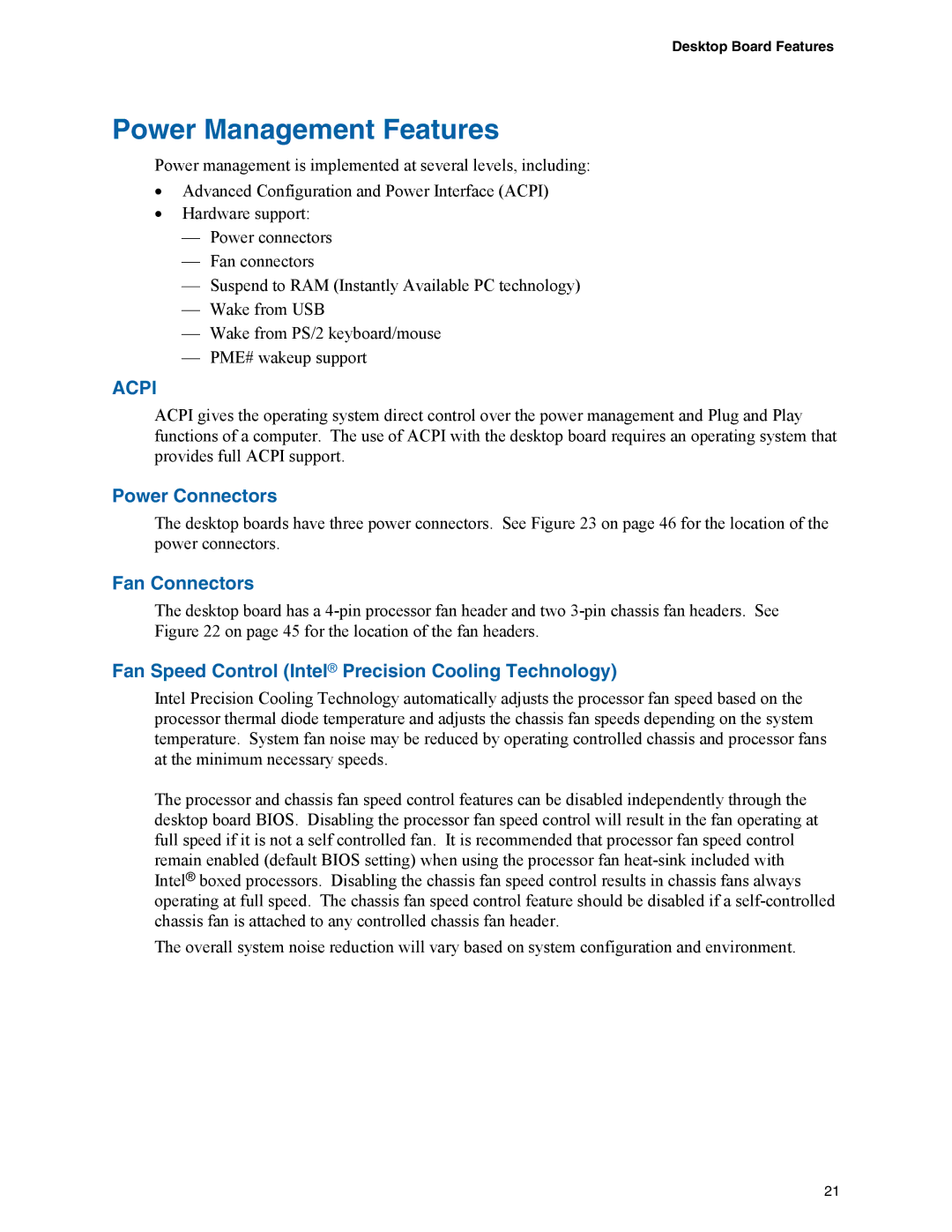Desktop Board Features
Power Management Features
Power management is implemented at several levels, including:
•Advanced Configuration and Power Interface (ACPI)
•Hardware support:
⎯Power connectors
⎯Fan connectors
⎯Suspend to RAM (Instantly Available PC technology)
⎯Wake from USB
⎯Wake from PS/2 keyboard/mouse
⎯PME# wakeup support
ACPI
ACPI gives the operating system direct control over the power management and Plug and Play functions of a computer. The use of ACPI with the desktop board requires an operating system that provides full ACPI support.
Power Connectors
The desktop boards have three power connectors. See Figure 23 on page 46 for the location of the power connectors.
Fan Connectors
The desktop board has a
Fan Speed Control (Intel® Precision Cooling Technology)
Intel Precision Cooling Technology automatically adjusts the processor fan speed based on the processor thermal diode temperature and adjusts the chassis fan speeds depending on the system temperature. System fan noise may be reduced by operating controlled chassis and processor fans at the minimum necessary speeds.
The processor and chassis fan speed control features can be disabled independently through the desktop board BIOS. Disabling the processor fan speed control will result in the fan operating at full speed if it is not a self controlled fan. It is recommended that processor fan speed control remain enabled (default BIOS setting) when using the processor fan
The overall system noise reduction will vary based on system configuration and environment.
21
